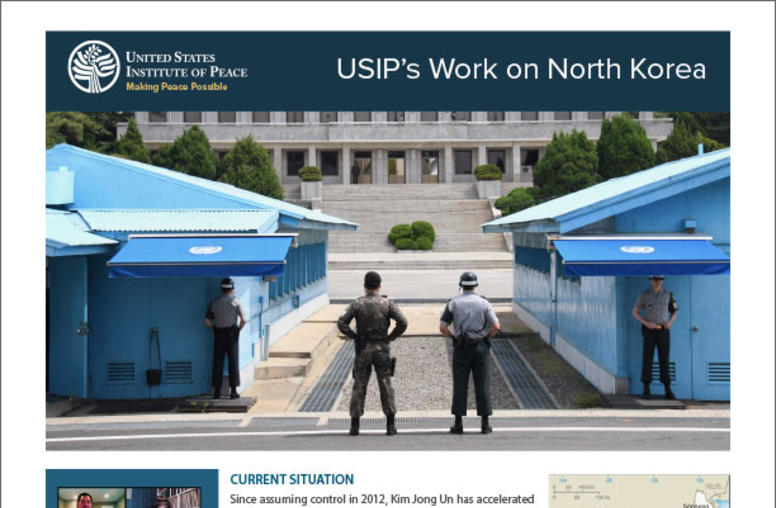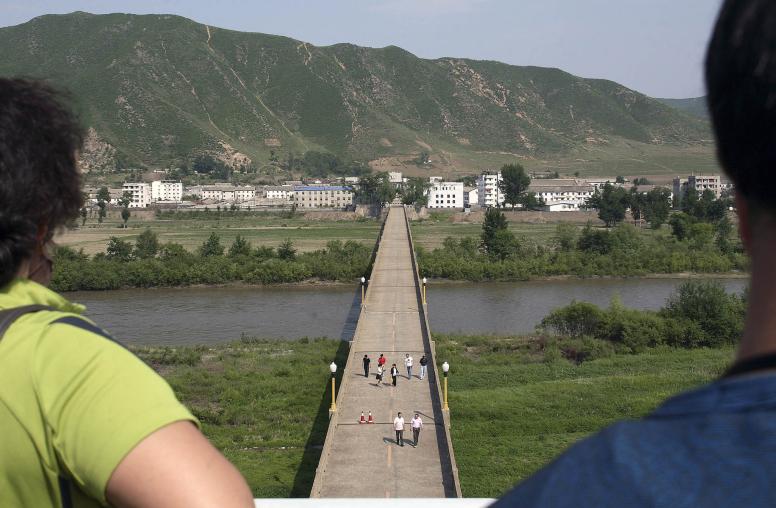On the Issues: The Fog of the Post-Kim Jong-il Period
John Park, a senior program officer who directs USIP’s Korea Working Group, analyzes the key policy issues arising from the sudden death of North Korean leader Kim Jong-il on December 17.
December 19, 2011
John Park, a senior program officer who directs USIP’s Korea Working Group, analyzes the key policy issues arising from the sudden death of North Korean leader Kim Jong-il on December 17.
How was Kim Jong-il’s death announced? What’s at stake?
On December 19, North Korean state media announced that Kim Jong-il had died on December 17. The report stated that Kim had succumbed to mental and physical exhaustion while conducting on-site guidance visits. When news of Kim Il-sung's death was unveiled in 1994, international reaction – particularly in regional stock markets – stabilized quickly. What’s different now is that we're dealing with a North Korea that has conducted two nuclear tests and significantly expanded its nuclear weapons programs.
Internally, the North Korean regime will need to show consistently that they're in command since the U.S. and South Korean militaries are prepared to respond to instability. Washington and Seoul’s concern is that instability will lead to a breakdown of command and control in a country that has active nuclear weapons programs. Beijing’s major concern is a massive outflow of North Korean refugees into the Chinese provinces in the border region.
What was the situation in North Korea immediately after the announcement of Kim’s death?
DailyNK, a news outlet based in Seoul with mobile phone access to North Koreans inside the reclusive country, reports that North Korean security forces have imposed rigid social controls following the announcement. The authorities have closed markets and prohibited people from going outside.
The loyalty of the elites to Kim Jong-eun, Kim Jong-il’s third son and anointed successor, is currently uncertain. Kim Jong-il had handpicked the powerful officials in Kim Jong-eun's inner circle. These are now like powerful solar panels that have suddenly lost their energy source after the sun has set. This raises serious questions about the viability and legitimacy of Kim Jong-eun. He was in the midst of an accelerated leadership grooming process to become the next sun. Kim Jong-il's plan focused on using the massive festivals and ceremonies of 2012 – which marks the 100th, 70th and 30th anniversaries of the births of Kim Il-sung, Kim Jong-il and Kim Jong-eun, respectively – as a foundation for giving Kim Jong-eun legitimacy and power.
How did the North Korean people react to the announcement?
When Kim Il-sung died of a heart attack in 1994, the North Korean people wailed openly because they had viewed him as the benevolent, caring father. On the large anniversaries and national days in North Korea, the people would receive a gift from the Great Leader. Recent North Korean defectors note that under Kim Jong-il, the people have experienced nothing but hardship. With the September 2010 unveiling of Kim Jong-eun as the successor-in-training, the people were quite skeptical of his capability and feared even more suffering under a weak leader.
How can we better understand the significance of the unfolding events in the region?
We have just entered into the fog of the post-Kim Jong-il period. The main task is to determine who or which group is in control of North Korea. It's too late to reach out and establish new contacts and channels. China is the only country that has previously established extensive ties via a relationship between the Communist Party of China’s International Department and the Workers' Party of Korea. However, it's important to point out that while China has such ties with key groups in North Korea, that doesn't necessarily mean it has special influence or leverage.
We collectively need to determine who's in control and how effective that control is. If it appears that instability is rapidly unfolding, the surrounding countries will respond in different ways. It will be critically important how the respective countries navigate through this fog. A compounding effect could be various countries misreading each other's defensive preparations and military movements. It's paramount that the leaders of the resident powers in the region engage in clear and regular communication with each other during this fog.
How is USIP contributing to efforts to prevent conflict on the Korean Peninsula?
Given frequent leadership changes and rapidly evolving security, political, economic and environmental challenges in the region, the U.S. and its Northeast Asian counterparts increasingly lack the capacity for sustained analysis, development and implementation of policy approaches to prevent conflicts. Cognizant of this trend, USIP launched and convenes recurring Track 1.5 policy dialogues – like the Korea Working Group – with current and former policymakers and advisers. They facilitate three things: a deeper understanding of complex policy issues, early direct crisis communication, and the development of prevention initiatives and strategies. By generating feedback on early-stage policy proposals developed and discussed in USIP’s Track 1.5 meetings, we have been able to increase the likelihood of traction at the Track 1 level.
View all of USIP's work on the Korean Peninsula and follow USIP on Twitter.



